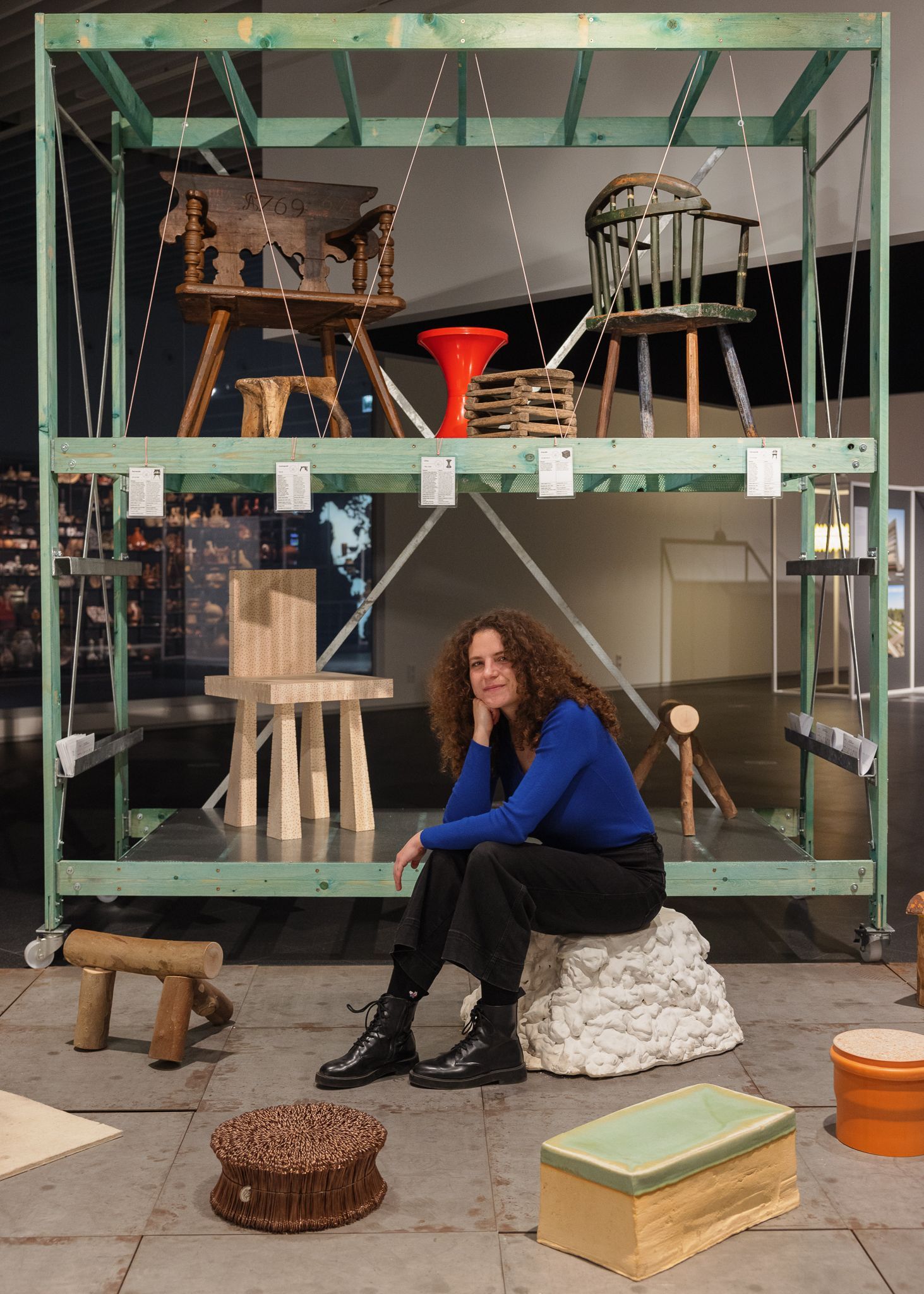Chair Pairs, the exhibition of the Museum of Ethnography in Budapest presents the interplay between the objects from the institution’s collection, the knowledge about them, and the expressive possibilities of contemporary design. How was the exhibition created? What can become a chair? What is a chair and how far can the limits of this object be pushed? We interviewed Anna Zsoldos, one of the exhibition’s curators.
Where did the idea for the Chair Pairs exhibition come from?
Originally, Zsófi Frazon, the head of the MaDok program, asked the AuWorkshop architectural firm to design chairs for the furniture collection of the Museum of Ethnography. When I started my work here in January, we talked about the concept, and then I took over the curatorial role from her. By that time, the preparations were already underway. Members of the AuWorkshop had examined the chairs in the collection several times with Tamás Molnár—the exhibition’s other curator and the museologist of the furniture collection—and discussed and brainstormed about the project.
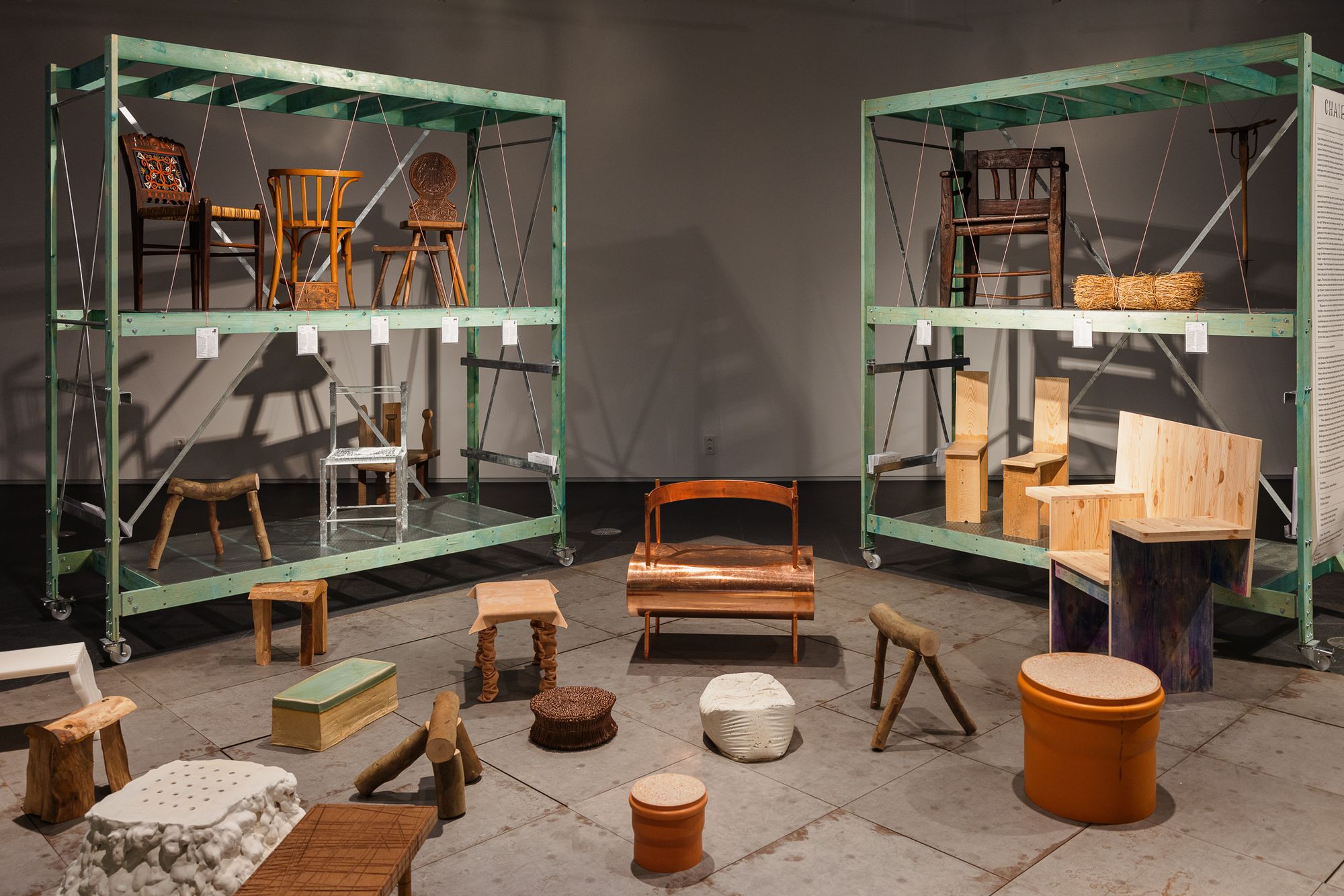
Why was AuWorkshop chosen for the job?
Zsófi approached them in part because folk architecture has a significant place in their work, they often refer to it, but not in form, rather as an inspiration for its faults, incompleteness, asymmetry, ‘clumsiness’ resulting from handicraft or lack of professional expertise. All of these are treated as faults by the professionals, but in vernacular architecture, they are not, in fact, it is the unevenness of a wall that provides its beauty.
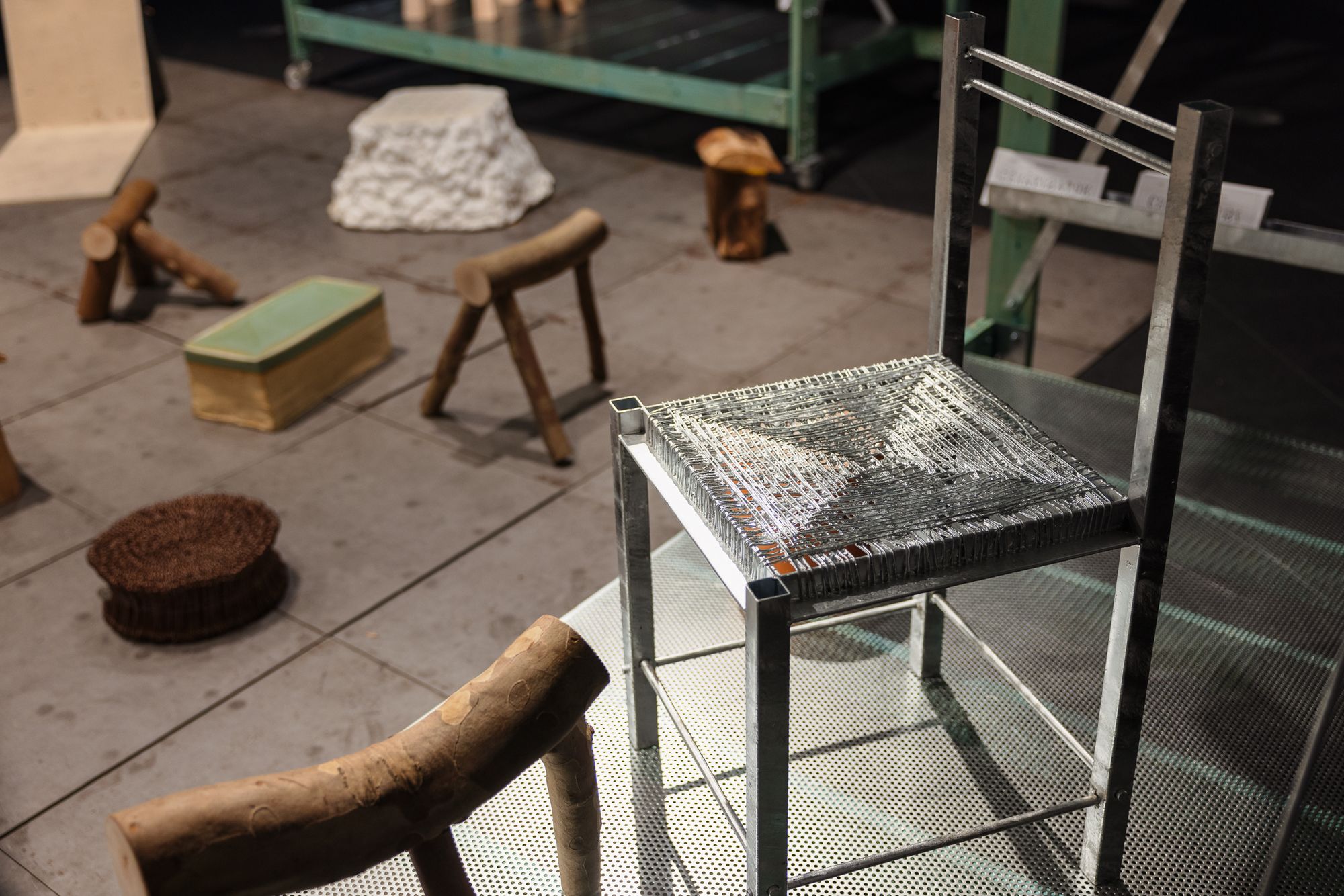
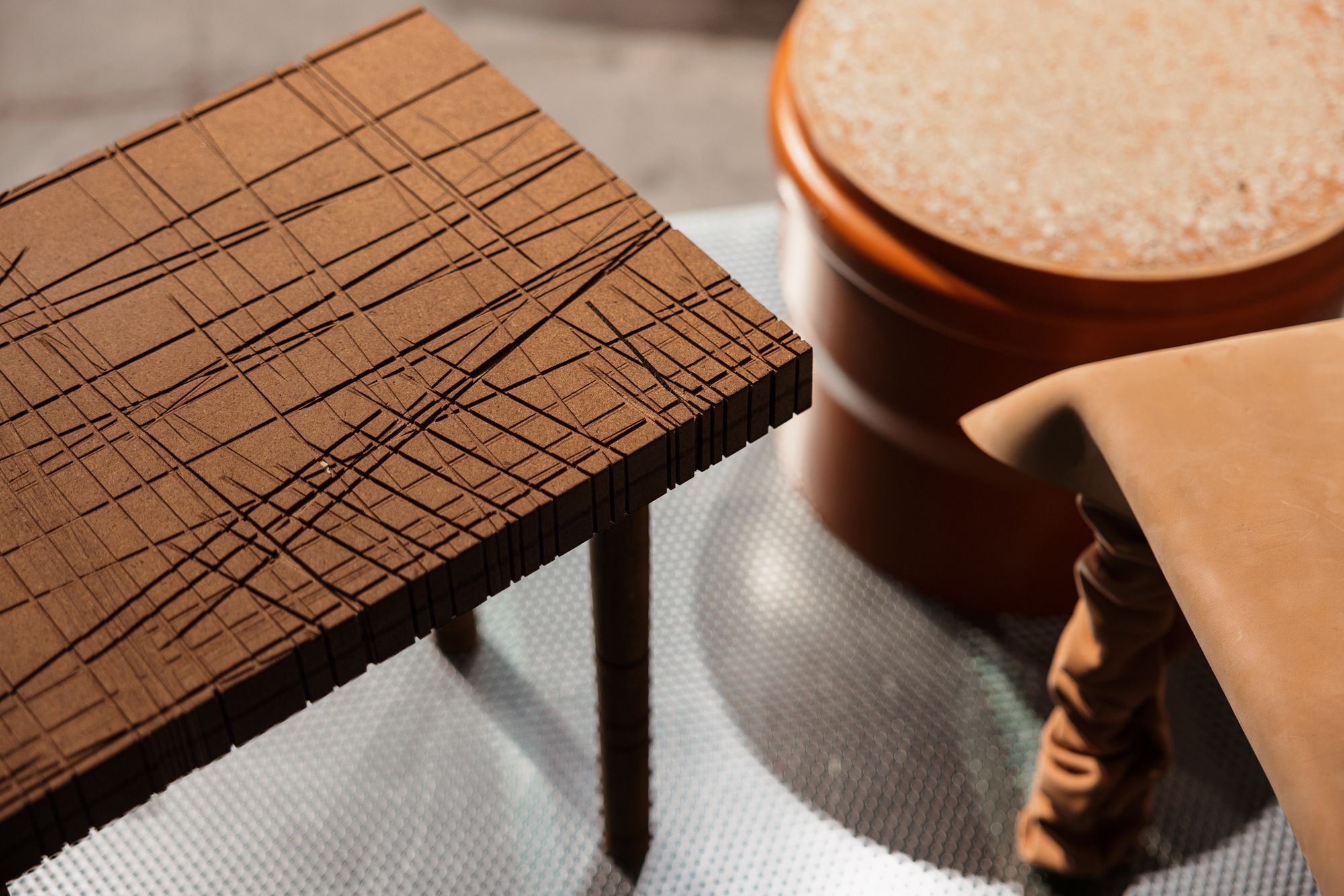
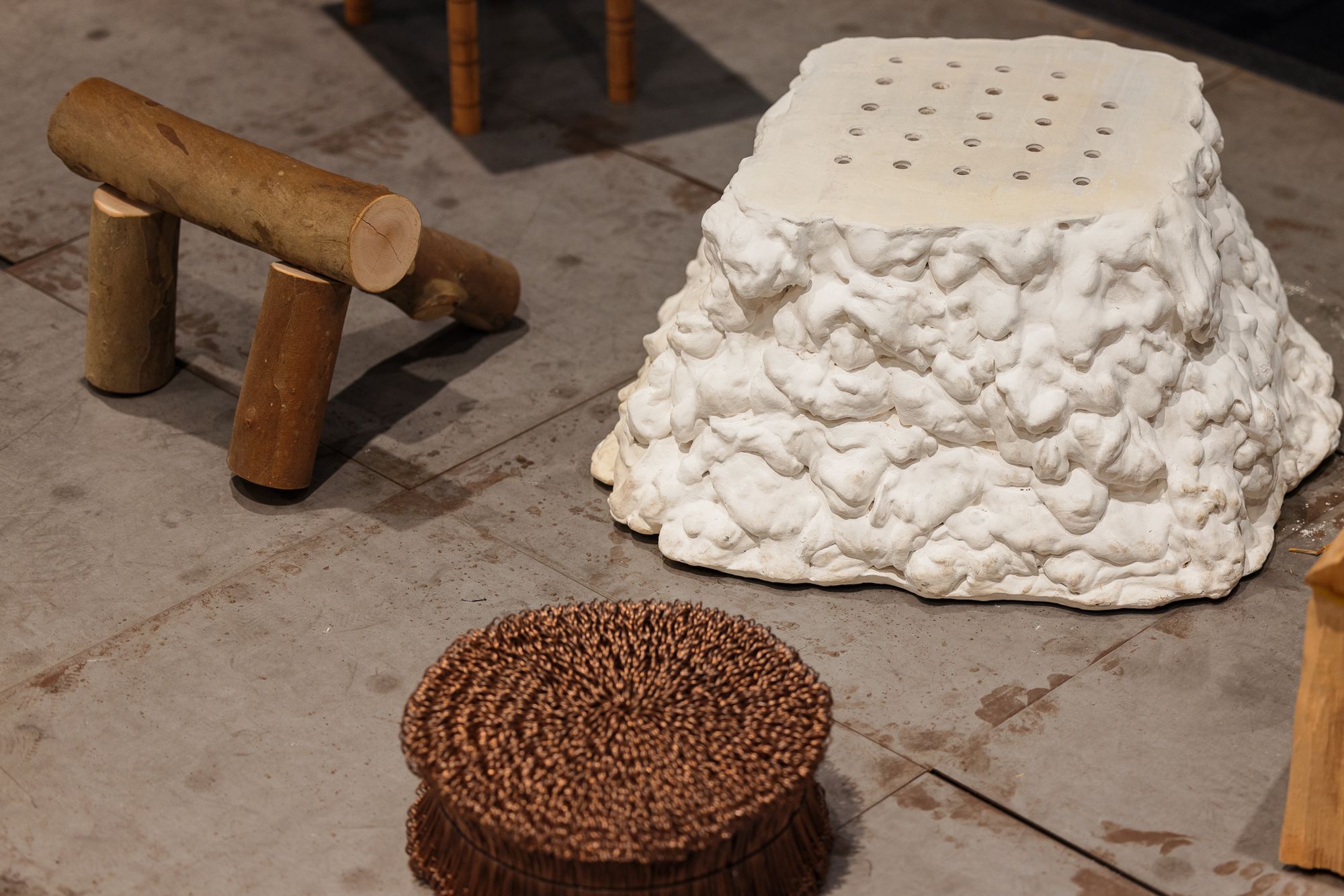
Did you get involved with the work of the AuWorkshop or did they make the chairs on their own?
I used to intern for them, so we already knew each other rather well, we have created exhibitions and a book together. I visited them every week, and many of the chairs were the result of a collective reflection. They were able to try out and realize a number of ideas that interested them from an architectural point of view through the chairs. For them, it was a truly inspiring work.
Who selected the furniture from the collection?
Tamás and I, although some furniture was chosen by the AuWorkshop because they deemed them important. However, essentially it was we who selected the chairs that were conceptually and formally related to their designs. There are 1200 chairs in the collection of the Museum of Ethnography and nine hundred in the furniture collection, from which we had to select 18 pieces.

What criteria did you use in the end?
We wanted to reflect the changes of the times and technology, which is why we included the Thonet chair, the tom tom stool, and a plastic garden chair. Each of these chairs speaks of a particular historical period, social situation, and user group. Some chairs had a certain prestige, for example, they could only be used by the head of the family, while others were used exclusively for work, so they were kept in the stable. Another approach is the method of production: we wanted to include furniture made by a carpenter, joiner, or handyman, but also furniture made in a manufactory, or that was mass-produced. And then there is the material: wood, plastic, or even bone, like horse skulls, which man has gathered from nature and shaped into chairs. Then, of course, there was the question of ornamentation, decoration, and painting.
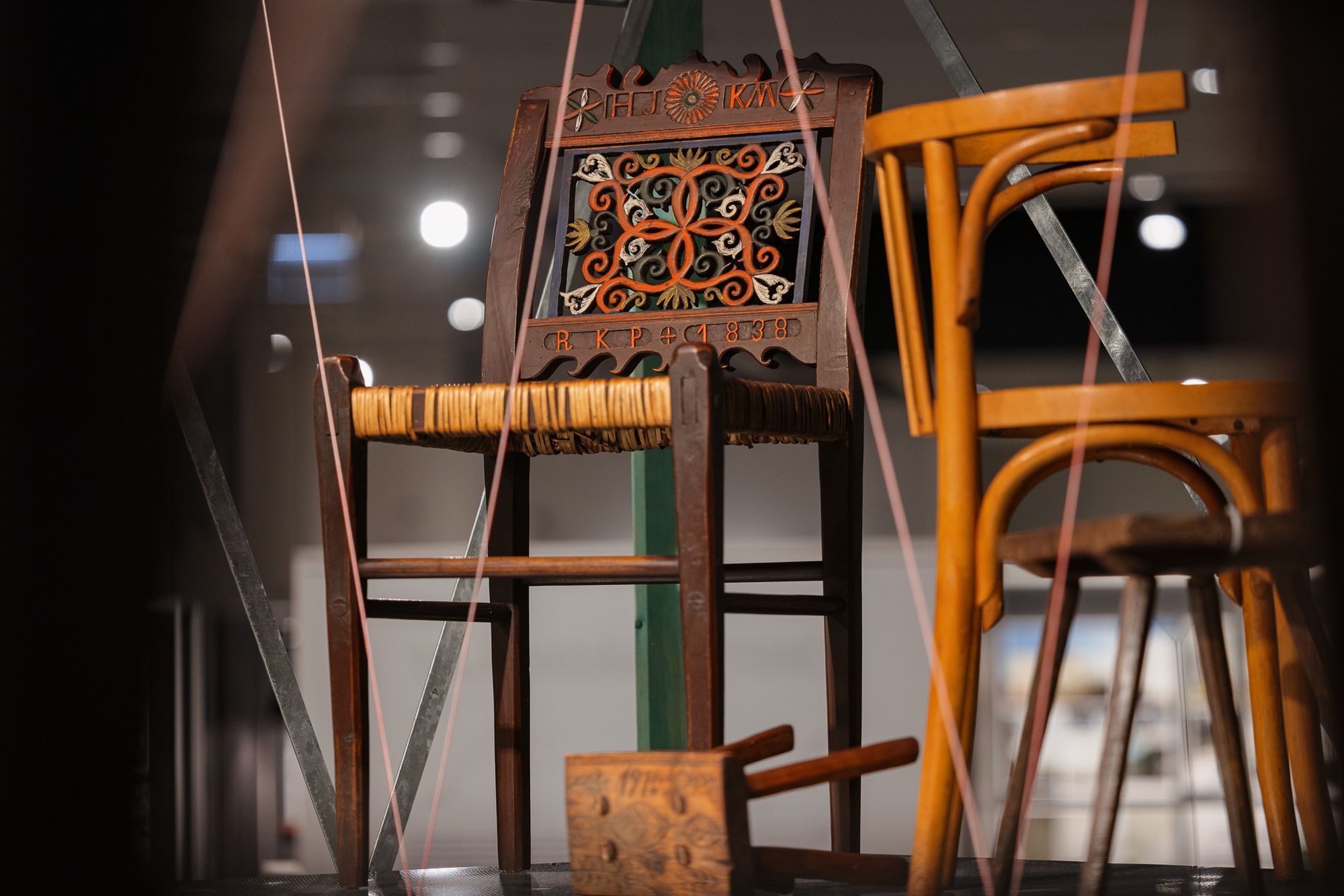
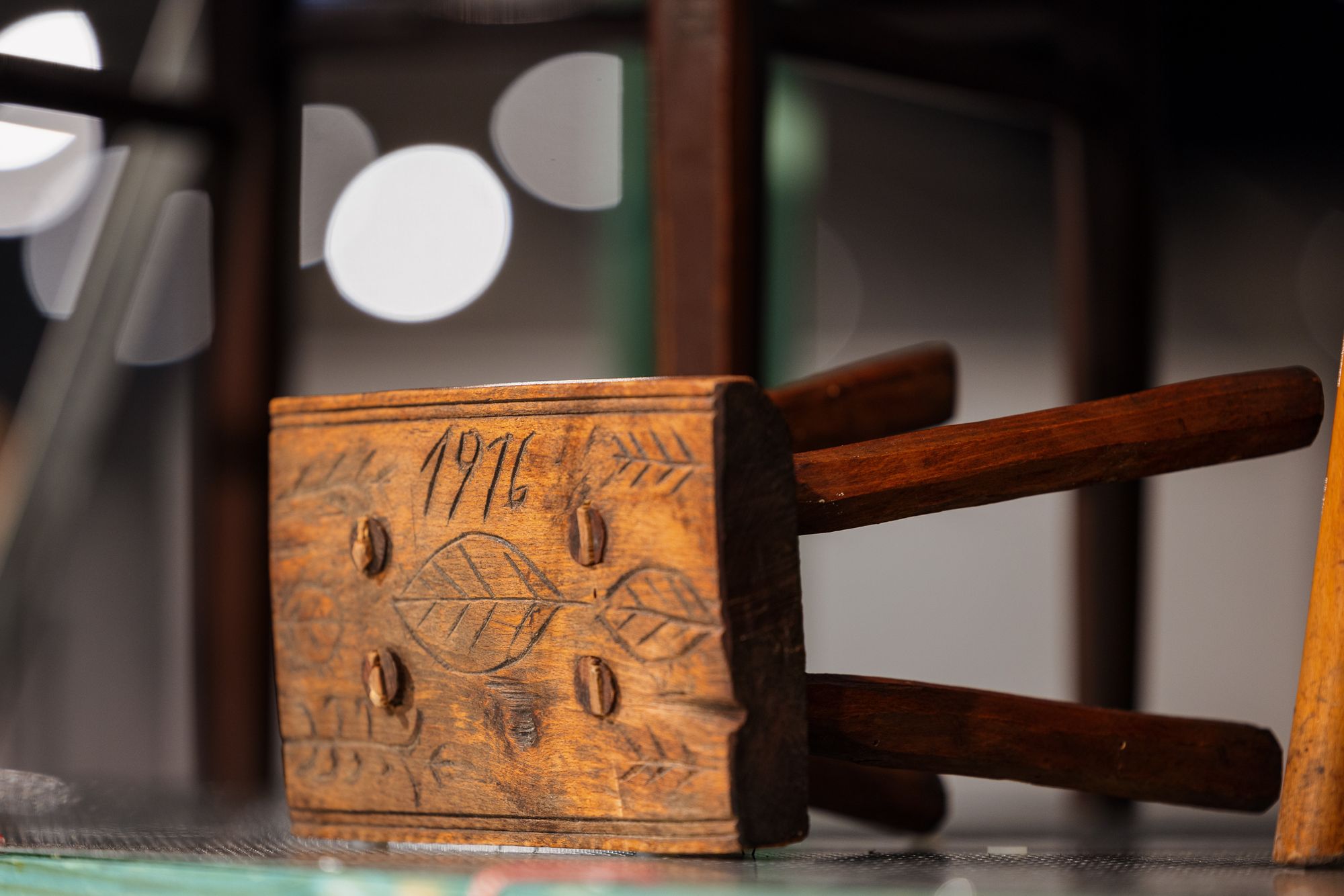
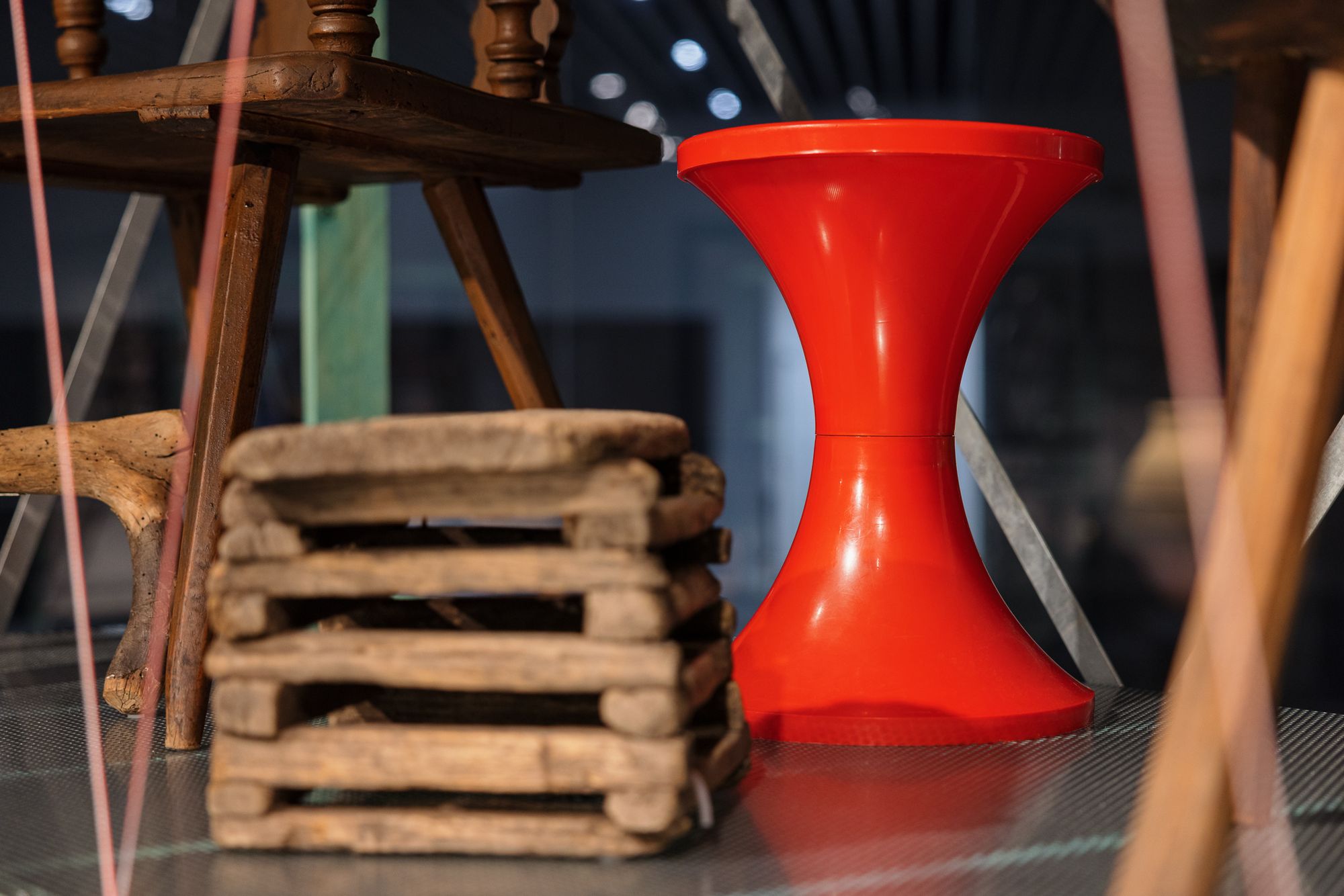
Were there any exhibitions or books on chairs that inspired you?
Klára K. Csilléry was the colleague who started to study and research the chairs stored in the Museum of Ethnography, the history of their creation, and their evolution, so we drew a lot from one of her books. For example, we know from her that the brick mason’s chair was an engagement gift. This one has a name and a date on it, it was customary to give secret presents like these to young ladies. And in 1999 there was an exhibition called Székképek (Chair Pictures—the Transl.), where every item of the furniture collection was displayed and the chair as an object was utilized as the basis for creating a history of science exhibition. We were also greatly influenced by the exhibition and the resulting book by the English designer Jasper Morrison. He was asked by the National Museum of Ethnology in Lisbon to make a selection from their collection, and he made an exclusive selection of objects that are related to hard work. Our scope however is wider than this, so we have also included an armchair, for example, also known as a thinking chair or moping chair (a provincialism from Hungary’s Transdanubia region—the Transl.).
In the brochure, there is a definition: “a chair is a physical structure that facilitates a person’s seated position”. How did this definition come about? If this is true, anything can be a chair.
Yes. This exhibition, in fact, states that a chair is what you use as a chair. We wanted to challenge the idea that only an armchair would be a chair. A chair can be a beer crate turned upside down, a skull, or even a clump of grass dug out of the ground. Of course, this can be turned around and what was originally intended to be a chair can become, for example, a storage unit.
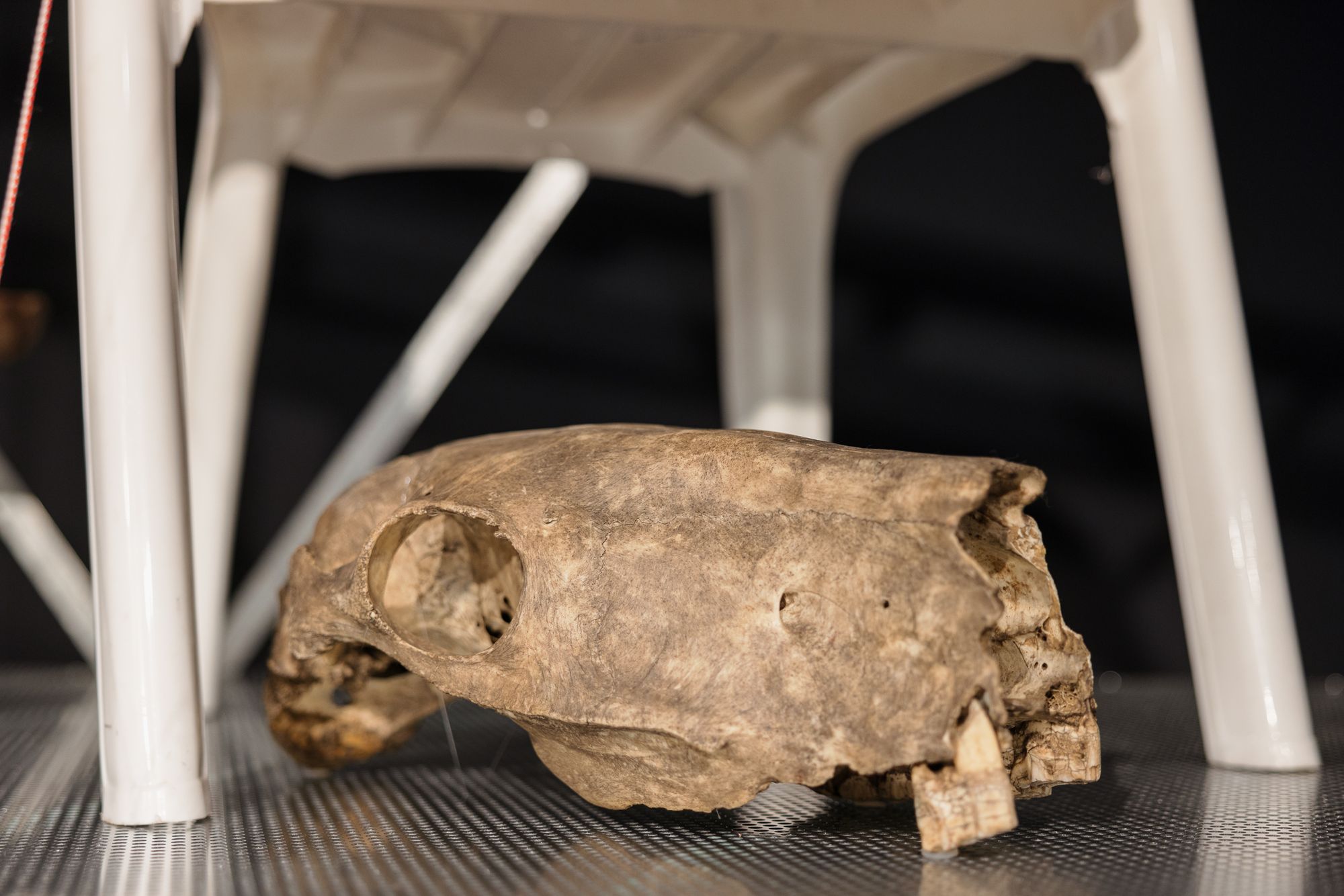

Were there any borderline objects?
We had a discussion with Tamás and several museologists about whether the headrest is a chair or not. Tamás argued that it is not, but a pillow-like object that the shepherd used to rest his head on to stay half awake and because he had to keep an eye on the animals. However, the AuWorkshop had a piece of furniture that rhymed with this, so we linked them together.
Which one is your favorite? Which one would you take home?
My favorite from the collection is the walnut walkstool used by shepherds when milking sheep, which has a split walnut branch for a seat and the stumps of three smaller branches sprouting from it for legs. Among the AuWorkshop’s pieces, there is one made of nine different types of wood, lighter types on the top and darker ones on the bottom. This reflects both the long history of making Luca-chairs (a handmade chair with supposed spiritual power in the Hungarian folkways—the Transl.) from multiple types of wood, as well as the dualistic worldview that is ever-present in the world of faith and folklore. Above and below, day and night, light and dark, heaven and hell—in short, there is a kind of universal quality to it.

What kind of chairs do you have at home?
I use a very simple red wooden chair that I don’t remember where I got from. Probably from home, because my parents wanted to throw it away, so it was given to me for whatever I may need it for. I also do a lot of sitting on the kitchen chair, which is rather stool-like, similar to a tom tom stool. I also have three original Thonet chairs, but I don’t sit on them, they are occupied by flowers.
So then they are not even chairs anymore.
No, but they can still be.
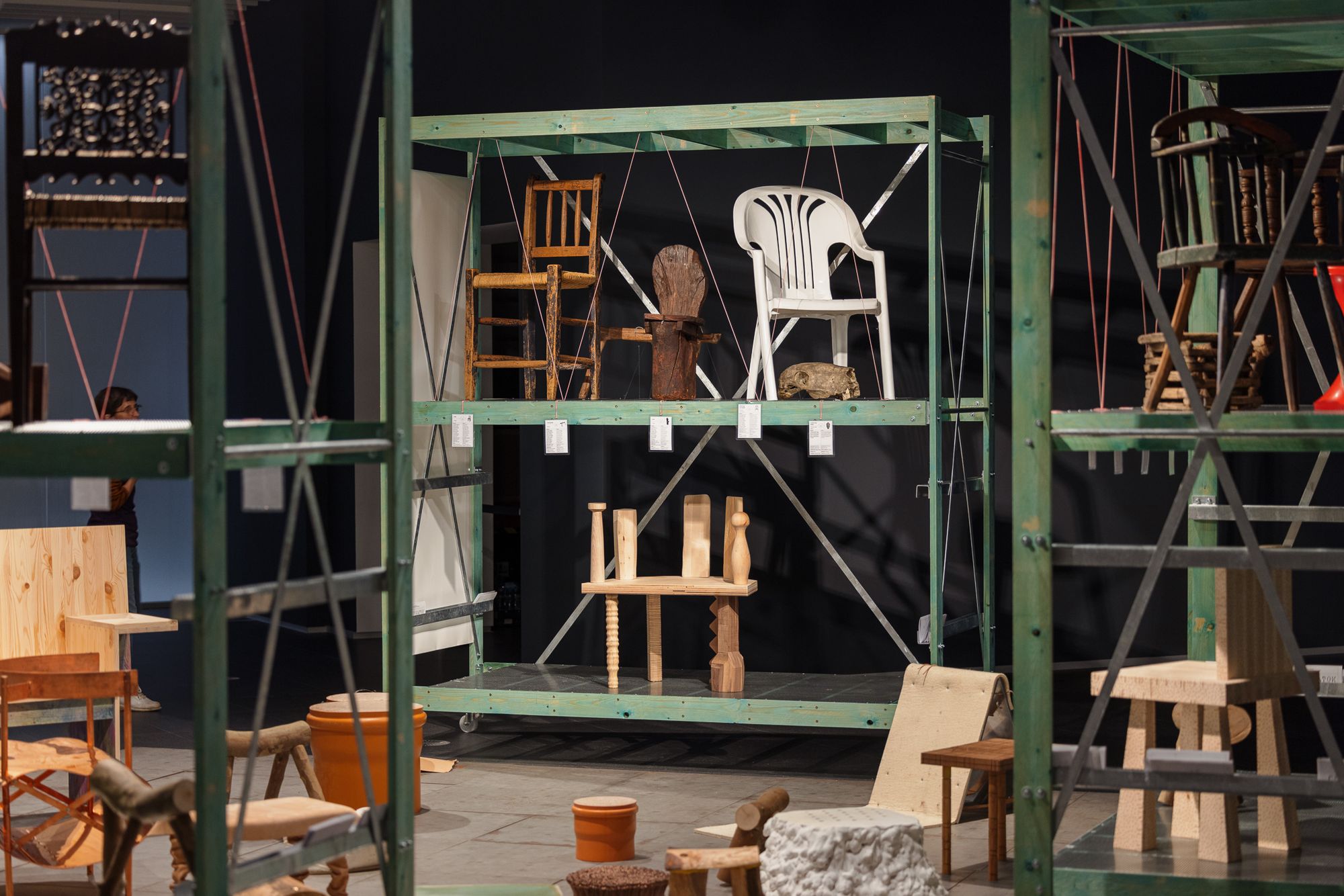
Chair Pairs
Museum of Ethnography
Until 31st of January 2023
Curator: Anna Zsoldos, Tamás Molnár
Concept, design, and implementation: Architecture Uncomfortable Workshop/ AU Workshop (Lukács Szederkényi and Emil Dénes Ghyczy)
Project supervisor: Zsófia Frazon
Exhibition graphics: Tamás Boldizsár Hoffmann
Photos: Balázs Mohai









